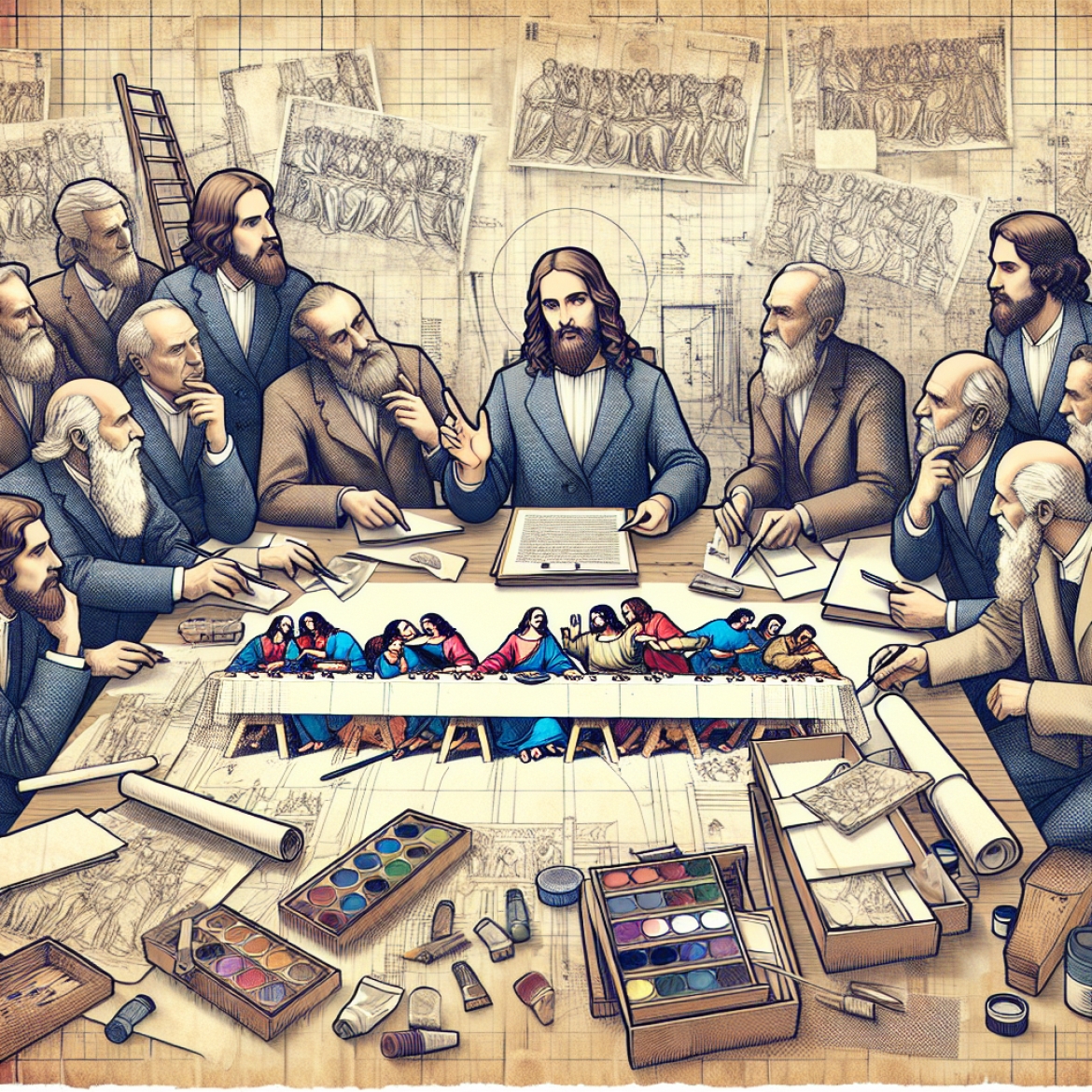Leonardo da Vinci's The Last Supper is a masterpiece of Renaissance art, driven by genius and innovative mastery. But what if Leonardo had used PRINCE2 project management principles during its creation? Let's explore how the project might have unfolded, complete with a project board and key roles.
The Project Board:
In this imagined scenario, the Project Board for The Last Supper would have included significant figures:
- Duke Ludovico Sforza - The Project's Sponsor and main financier. His passion for the arts and desire to leave a lasting legacy make him the perfect Project Executive.
- The Prior of Santa Maria delle Grazie - The Senior User, an important stakeholder, interested in both the aesthetic and spiritual validity of the work. Legend has it that in a historical discussion, the Prior remarked, "This work will resonate with every brother who sits at this table." Responsible for keeping the value of the business in focus, might have been fulfilled by a trusted advisor to the Duke, perhaps an intellectual like Bramante. He would ensure that the artistic investment yielded an appropriate cultural and political return, observing, "This is not just painting; it's the heritage of Milan."
- Leonardo da Vinci - Senior Supplier, not only the master artist but also the keeper of artistic ethics and executive vision.
The Role of the Project Manager:
In a PRINCE2 context, Leonardo himself would have served as the Project Manager, deftly resisting external pressures (such as those from the Prior to complete the work quickly) through robust planning. It's said that when hasty alterations were requested, Leonardo replied, "Even time must bow to perfection."
Project Brief:
A Project Brief would have been crafted to define the essence of the project. As the legend goes, Leonardo presented his vision to the Duke Ludovico Sforza, saying, "This shall be more than a painting; it will capture the soul of Milan and the serenity of the moment." The brief would outline the project's objectives: creating a masterpiece that not only depicted the biblical scene with profound emotion but also enhanced the prestige of the refectory of Santa Maria delle Grazie.
Project Initiation Document (PID):
The PID in a PRINCE2 framework would encompass comprehensive details about the project’s execution. Leonardo, as the Project Manager, might have drafted the document with sketches, timelines, and budgets, stating, "While art bends time, best to bind it with plans." This document would also outline critical assumptions, scope, risks, and stakeholder analysis, ensuring the scalability of techniques and materials proposed for the mural.
Phase Division:
The project would be structured in phases, such as conceptualization, preparation, execution, and completion. During the preparation phase, it's said Leonardo spent weeks contemplating the expressions and emotions for each apostle. As he murmured to himself, "Each face a window to the soul," he planned each phase meticulously to ensure every detail aligned with his artistic vision, anticipating adjustments with each review.
Work Packages:
Leonardo might have divided the work into distinct packages. For example:
- Design Work Package - Covering initial sketches and character studies.
- Material Preparation Package - Testing pigments and canvassing potential problematic areas of the wall.
- Execution Work Package - The actual painting process, carefully scheduled to manage the complex application of layers and color blends.
During reviews, Leonardo’s apprentices would report progress, echoing his words, "Perfection rides on tiny brushstrokes."
Principle of Exception:
A standout principle of PRINCE2, the manage by exception approach, would be key. During the execution, if issues arose—such as flaking paints or unanticipated dampness on the wall—these exceptions would be escalated. Anecdotal whispers capture Leonardo reassuring the Duke, "Even if colors fade, we shall adapt, for art defies decay." The Board, including the Duke and trusted advisors, would then decide on appropriate corrective actions, allowing Leonardo to stay focused on the creative process while maintaining oversight.
Project Assurance:
The Project Assurance role provides an independent assessment of the project’s adherence to its objectives and methodologies. Imagine that this role was taken on by a trusted advisor of Duke Ludovico Sforza, perhaps a scholar like Luca Pacioli, known for his expertise in mathematics and rational thought.
As Project Assurance, Luca's role would involve:
- Monitoring Progress: Ensuring the project aligns with the objectives set out in the Project Initiation Document (PID). He would frequently visit Leonardo’s studio, offering a perspective untouched by the canvas’ enchantment, quipping, "Numbers speak where colors mesmerize."
- Stakeholder Engagement: Ensuring all parties, from the Duke to the monastery’s Prior, were satisfied with progress. He might approach Leonardo and say, "Your vision stuns, yet the Duke dreams of his grandeur mirrored—balance we must find."
- Resource Allocation: Verifying that resources were used effectively and identifying any emerging risks or issues, allowing Leonardo to focus purely on the artistic endeavor.
Quality Assurance (QA):
Quality Assurance in PRINCE2 focuses on ensuring the quality requirements and standards for the project are planned and applied appropriately within the project’s lifecycle. QA might be spearheaded by another artisan, specifically trained in Renaissance art techniques.
- Establishing Standards: Defining the quality standards and techniques for the painting process, including the innovative use of perspective that Leonardo envisioned.
- Preventative Measures: Ensuring that processes were adhered to, such as the preparation of the wall and selection of pigments, to prevent issues. The QA personnel would remind the team: "Preparation shall prevent imperfection."
Quality Control (QC):
Quality Control, on the other hand, involves inspecting specific deliverables or outputs to ensure they meet the quality standards set out in QA.
- Review Sessions: Conducting regular inspections of Leonardo’s work to ensure alignment with planned sketches and color palettes. As an anecdote imagines, an apprentice might comment during a QC session, “The shadows play as foreseen, but does the light dance as planned?”
- Feedback and Adjustment: Providing feedback to Leonardo for any deviations and implementing adjustments; for instance, ensuring the harmony of the apostles’ expressions as discussed in early project phases.
This framework not only reinforces the vital roles within PRINCE2 but also highlights their applicability to diverse projects, even historical masterpieces like Leonardo’s work.
#PRINCE2 #LeonardoDaVinci #TheLastSupper #ProjectManagement #QualityAssurance







